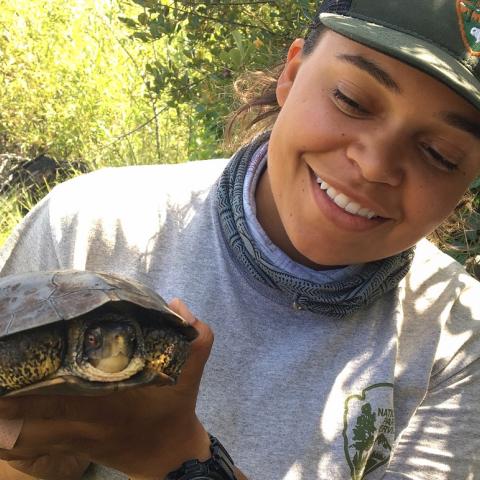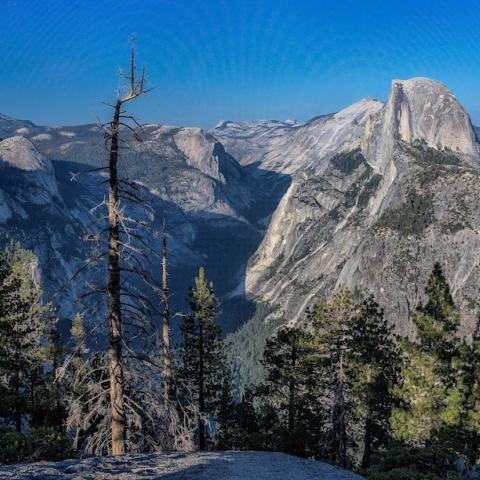
For the first time in 50 years, western pond turtles will call Yosemite Valley home/NPS
A half-century after the California red-legged frog and western pond turtle disappeared from Yosemite Valley, in large part because of decisions made by humans, both species will be reintroduced to lake, river, or meadow habitats beginning this summer.
“This is a landmark event for Yosemite National Park and a historic opportunity to re-establish species that contribute to a healthy park ecosystem,” Yosemite National Park Superintendent Don Neubacher said in a release. “This is also one of the signature Centennial projects for the National Park Service, and it will be exciting to once again see California red-legged frogs and western pond turtles in Yosemite Valley.”
Over the next three years, the goal is to reintroduce 4,000 California red-legged frog tadpoles and 500 adult frogs. Over the next eight years, 100 adult western pond turtles will be reintroduced to establish self-sustaining breeding populations. The first 10 turtles, released this month, will be fitted with radio transmitters to track and identify preferred habitats in Yosemite Valley.
The disappearance of the two species from Yosemite Valley can be tracked to a variety of decisions made over nearly a century. Introducing non-native and predatory American bullfrogs to the Ahwahnee Hotel reflection pond in the 1950s was the most definitive cause of the frog’s decline. Artificially high populations of raccoons, which are predators of turtles and frogs, resulted from open refuse sites in the 1970s and severely impacted populations. Removal of large woody debris along the Merced River also contributed to the decline of western pond turtles. Over decades, those conditions have been reversed. The bullfrogs have been eradicated, open refuse sites closed, and naturally occurring river and stream bank habitat left in place to allow for a successful reintroduction of the native frogs and turtles.
Yosemite Conservancy donors contributed $185,000 for research and habitat restoration to bring the frogs and turtles back to Yosemite. Over the past decade, the Conservancy has provided $540,000 to protect aquatic species in the park.
“Our donors’ generosity and the important work of our partners is providing a new generation of visitors with the opportunity to experience these species in Yosemite Valley for the first time,” Yosemite Conservancy President Frank Dean said in a release. “Maintaining the natural balance of biodiversity in the park is important to its long-term well-being and to sustaining opportunities for visitors to experience the park as nature intended.”
Over 500 California red-legged frog tadpoles and 14 Western pond turtles are being raised in a safe and isolated area at San Francisco Zoo & Gardens. The quarantined environment was created to accommodate the specific needs of the animals under the care of staff members and interns.
“Small animals like frogs and turtles are the indicators of environmental health and an important part of the food chain. We have to save them in order to conserve all wildlife,” San Francisco Zoo & Gardens President Tanya M. Peterson said in a release. “We are grateful to Yosemite National Park and Yosemite Conservancy for asking us to partner on this significant collaboration, which will have an immediate impact right in our own backyard.”
A permanent frog and turtle breeding facility, known as the San Francisco Zoological Society and Yosemite National Park Conservation and Recovery Facility, was officially dedicated May 25. Representatives from collaborating organizations attended the ceremony, including 54 fourth-graders from North Hillsborough School who will help to release turtles this month thanks to NatureBridge, which provides hands-on environmental science programs for children and teens.
The federally threatened California red-legged frog is assumed to be the species featured in Mark Twain’s “Celebrated Jumping Frog of Calaveras County.” It is 2-5 inches long and is the largest native frog in the western United States. It is reddish in color on the underside of the legs and belly, and communicates with a series of short soft grunts. It is found in ponds, pools and streams and wet meadows.
The western pond turtle generally measures 4-7 inches long. It is olive, dark brown or blackish in color, with undersides that are yellow with irregular color patches. It is found in streams, pools and vegetated banks, often seen basking on a log or rock.




 Support Essential Coverage of Essential Places
Support Essential Coverage of Essential Places







Comments
It's always nice to see these projects happening!
A note for the NPT stylebook: Ecologists prefer to use the term "restore" rather than "reintroduce" when talking about native species, since the species were not "introduced" in the first place. :-)
Removal of large woody debris along the Merced wasn't as bad as removing the glacial morainne at the end of the valley.